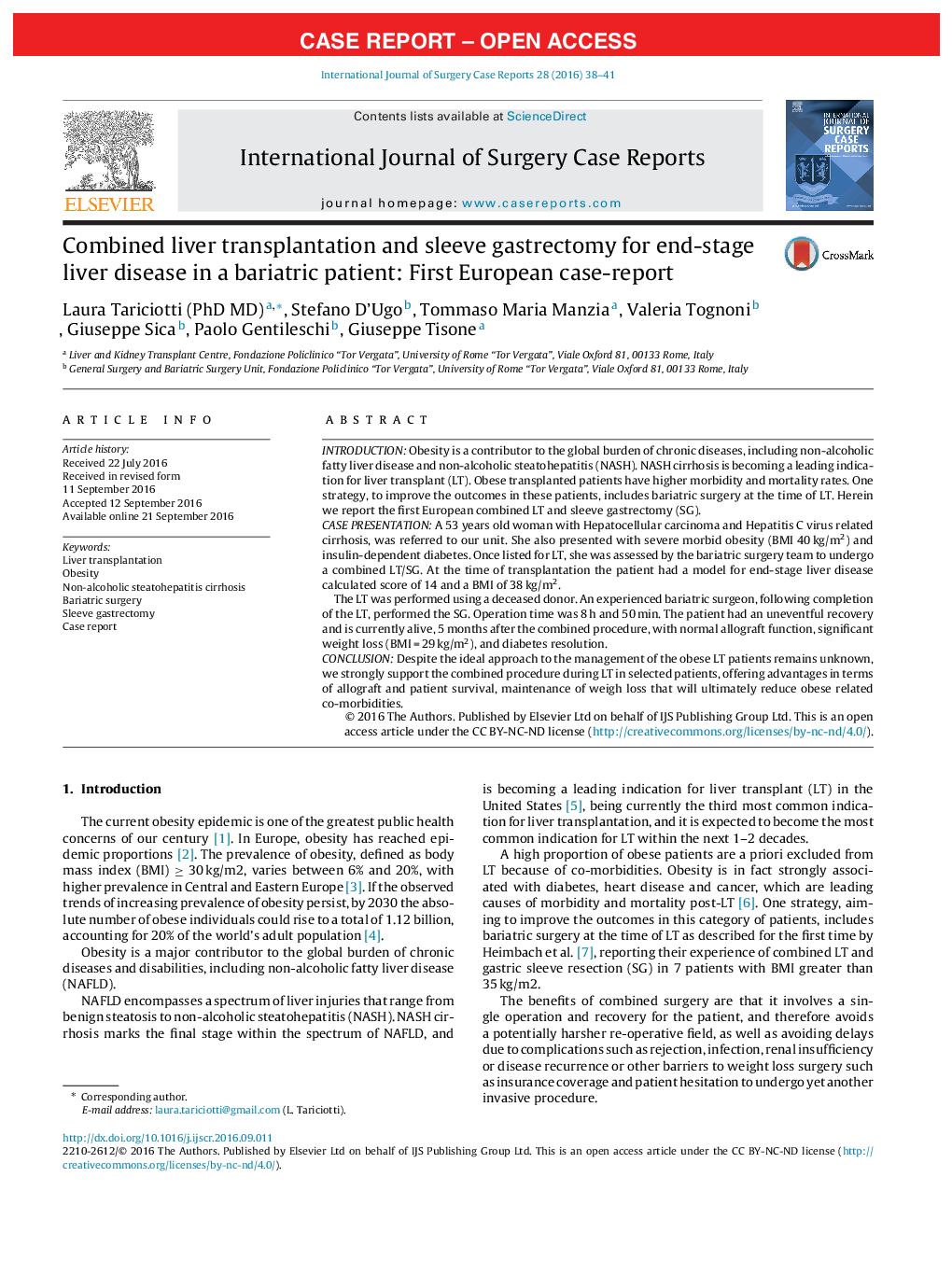| کد مقاله | کد نشریه | سال انتشار | مقاله انگلیسی | نسخه تمام متن |
|---|---|---|---|---|
| 4288123 | 1612086 | 2016 | 4 صفحه PDF | دانلود رایگان |
• Non-alcoholic Steatohepatitis is the 3rd indication for liver transplantation.
• Obese transplanted patients have higher morbidity and mortality rates.
• Bariatric surgery decreases morbidity and mortality in obese patients.
• Combined liver transplant and sleeve gastrectomy can be safely performed.
IntroductionObesity is a contributor to the global burden of chronic diseases, including non-alcoholic fatty liver disease and non-alcoholic steatohepatitis (NASH). NASH cirrhosis is becoming a leading indication for liver transplant (LT). Obese transplanted patients have higher morbidity and mortality rates. One strategy, to improve the outcomes in these patients, includes bariatric surgery at the time of LT. Herein we report the first European combined LT and sleeve gastrectomy (SG).Case presentationA 53 years old woman with Hepatocellular carcinoma and Hepatitis C virus related cirrhosis, was referred to our unit. She also presented with severe morbid obesity (BMI 40 kg/m2) and insulin-dependent diabetes. Once listed for LT, she was assessed by the bariatric surgery team to undergo a combined LT/SG. At the time of transplantation the patient had a model for end-stage liver disease calculated score of 14 and a BMI of 38 kg/m2.The LT was performed using a deceased donor. An experienced bariatric surgeon, following completion of the LT, performed the SG. Operation time was 8 h and 50 min. The patient had an uneventful recovery and is currently alive, 5 months after the combined procedure, with normal allograft function, significant weight loss (BMI = 29 kg/m2), and diabetes resolution.ConclusionDespite the ideal approach to the management of the obese LT patients remains unknown, we strongly support the combined procedure during LT in selected patients, offering advantages in terms of allograft and patient survival, maintenance of weigh loss that will ultimately reduce obese related co-morbidities.
Journal: International Journal of Surgery Case Reports - Volume 28, 2016, Pages 38–41
